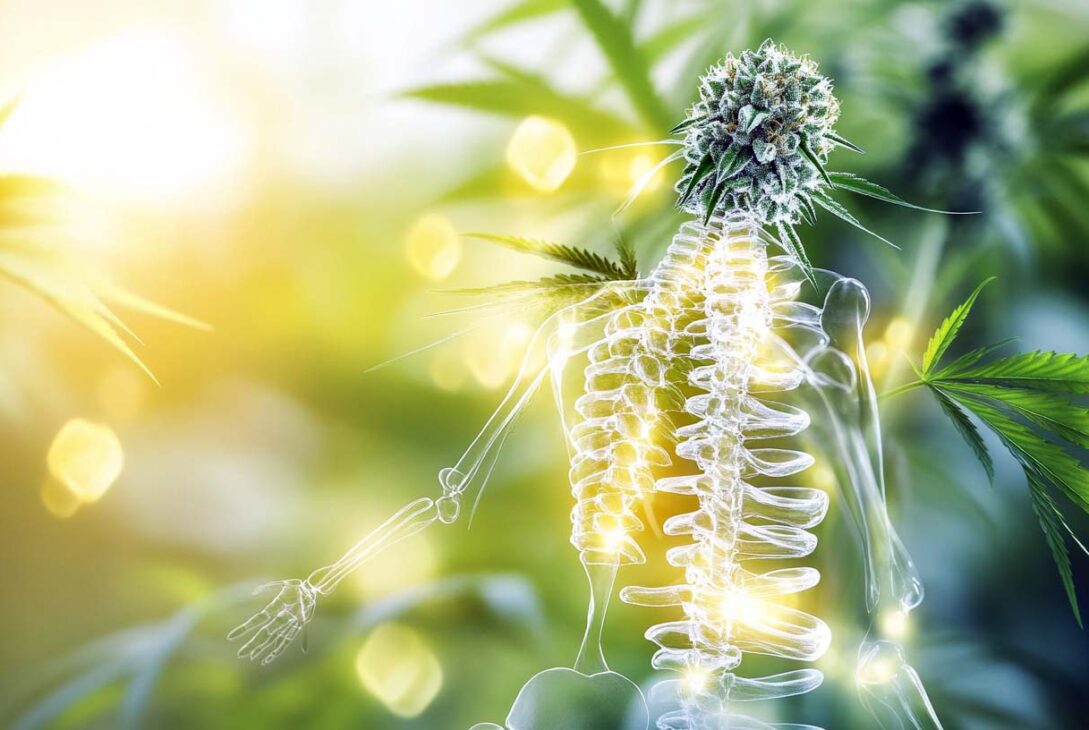Investigating Cannabinoid Effects on Bone Health: A Comprehensive Guide
In recent years, the therapeutic landscape has expanded with growing interest in cannabinoids, highlighting their potential benefits beyond traditional uses. One fascinating area of research is how cannabinoids might influence bone health, specifically their roles in osteoporosis, bone density, and the healing of fractures. This guide aims to provide an insightful examination of current research, the benefits, and the future of using cannabinoids to support bone health, particularly for an American audience seeking reliable information.
The Endocannabinoid System and Bone Health
To appreciate how cannabinoids might affect bone health, it’s essential to understand the endocannabinoid system (ECS). This intricate system encompasses cannabinoid receptors known as CB1 and CB2 along with endocannabinoids that our bodies produce. The ECS plays a crucial role in regulating numerous physiological processes, including metabolism, inflammation, and bone health.
Cannabinoid Receptors in Bone Cells
Research reveals that cannabinoid receptors exist in bone cells, indicating that the interaction with cannabinoids can directly impact bone formation and resorption. This connection sparks interest in the therapeutic potential of cannabinoids for conditions such as osteoporosis, a disease that severely affects bone density and increases the risk of fractures.
Effects of Cannabinoids on Osteoporosis
Osteoporosis, which is characterized by weakened bones and heightened fracture risk, affects millions globally. Understanding how cannabinoids can influence this condition is key for those concerned about their bone health.
Age-Dependent Effects
One notable study from the University of Edinburgh demonstrates that the effects of cannabis on bones shift throughout a person’s lifetime. In younger individuals, cannabis might decrease bone strength, but in older adults, it appears to have a protective effect against osteoporosis. This protective mechanism may involve reducing bone loss and preventing the unwanted accumulation of fat within bone tissue.
Therapeutic Opportunities
Preclinical and clinical studies suggest that cannabinoids, particularly Cannabidiol (CBD) and Cannabigerol (CBG), show promise for stimulating bone formation. They achieve this by activating cannabinoid receptors that influence bone metabolism, potentially opening new therapeutic avenues for individuals with osteoporosis.
Cannabinoids and Fracture Healing
Fracture healing is a sophisticated and dynamic process that encompasses inflammation, repair, and remodeling of bone. Recent research sheds light on the potential of cannabinoids in enhancing this process.
Pain Management and Healing Promotion
One of the remarkable discoveries in animal studies indicates that CBD and CBG can manage post-fracture pain effectively. Unlike nonsteroidal anti-inflammatory drugs (NSAIDs), which can inhibit critical inflammatory phases needed for healing, cannabinoids seem to promote healing while alleviating pain. They achieve this by increasing periosteal bone progenitors and accelerating the mineralization of the fibrocartilaginous callus, which is essential for fracture recovery.
Mechanisms of Action
During the initial, inflammation-driven phase of fracture healing, CBD and CBG stimulate the proliferation of periosteal bone progenitors and guide their differentiation into osteoblasts, the cells responsible for bone formation. In later stages, these cannabinoids enhance the mineralization process, bolster the viability of bone and bone-marrow cells, and lead to improved bone density and volume.
Benefits and Future Prospects
The exploration of cannabinoids in relation to bone health unveils several potential benefits, which may significantly impact treatment paradigms for conditions like osteoporosis and fracture care.
Analgesic Effects
CBD and CBG exhibit strong analgesic properties that could rival the effectiveness of NSAIDs, offering a compelling alternative for post-fracture pain management without the side effects linked to traditional pain medications such as opioids.
Enhanced Bone Healing
The ability of these cannabinoids to promote bone healing through diverse biological pathways beckons further investigation. Future research aims to dissect the intricate cellular and molecular mechanisms responsible for these effects, ultimately leading to the formulation of clinical applications tailored for adults dealing with fractures.
Conclusion
The investigation into the effects of cannabinoids on bone health opens up exciting possibilities for future treatments. As studies continue to advance, understanding the roles of cannabinoids like CBD and CBG may provide new hope for individuals concerned with osteoporosis and fracture healing. Here are some key takeaways:
- Therapeutic Potential: Cannabinoids may play a significant role in treating osteoporosis and aiding in fracture healing by promoting bone formation and recovery processes.
- Pain Management: CBD and CBG offer effective pain relief for post-fracture patients while supporting healing rather than hindering it.
- Future Research: Ongoing studies are crucial to uncovering the mechanisms behind these effects and developing safe clinical formulations for regular use.
As this exciting field of research continues to unfold, it’s crucial for individuals to stay informed and consult healthcare professionals when considering cannabinoid products.
Actionable Tips
- Consult Healthcare Professionals: Always engage with your healthcare provider prior to starting any cannabinoid regimen to explore the potential benefits and risks specific to your health situation.
- Stay Informed: Follow credible sources and scientific literature as they reveal new findings and keep you abreast of developments in cannabinoid research.
- Support Research: Advocate for and support further investigations into the therapeutic uses of cannabinoids.
By integrating a better understanding of cannabinoids into your health decisions, you can explore their potential benefits for bone health while navigating changes in this exciting and evolving field.





















